BYD Atto 3 vs Kia EV3 - Differences and prices compared
Costs and Efficiency:
Looking at overall running costs, both models reveal some interesting differences in everyday economy.
Kia EV3 has a minimal advantage in terms of price – it starts at 30800 £, while the BYD Atto 3 costs 33400 £. That’s a price difference of around 2572 £.
In terms of energy consumption, the advantage goes to the Kia EV3: with 14.90 kWh per 100 km, it’s hardly perceptible more efficient than the BYD Atto 3 with 16 kWh. That’s a difference of about 1.10 kWh.
As for range, the Kia EV3 performs clearly perceptible better – achieving up to 605 km, about 185 km more than the BYD Atto 3.
Engine and Performance:
Under the bonnet, it becomes clear which model is tuned for sportiness and which one takes the lead when you hit the accelerator.
When it comes to engine power, the has a edge – offering compared to . That’s roughly more horsepower.
In acceleration from 0 to 100 km/h, the BYD Atto 3 is minimal quicker – completing the sprint in 7.30 s, while the Kia EV3 takes 7.50 s. That’s about 0.20 s faster.
In terms of top speed, the Kia EV3 performs minimal better – reaching 170 km/h, while the BYD Atto 3 tops out at 160 km/h. The difference is around 10 km/h.
There’s also a difference in torque: BYD Atto 3 pulls minimal stronger with 310 Nm compared to 283 Nm. That’s about 27 Nm difference.
Space and Everyday Use:
Whether family car or daily driver – which one offers more room, flexibility and comfort?
Seats: offers more seating capacity – vs .
In curb weight, Kia EV3 is hardly perceptible lighter – 1800 kg compared to 1825 kg. The difference is around 25 kg.
In terms of boot space, the Kia EV3 offers minimal more room – 460 L compared to 440 L. That’s a difference of about 20 L.
In maximum load capacity, the BYD Atto 3 performs barely noticeable better – up to 1338 L, which is about 87 L more than the Kia EV3.
When it comes to payload, Kia EV3 evident takes the win – 470 kg compared to 335 kg. That’s a difference of about 135 kg.
Who wins the race?
The Kia EV3 proves to be dominates this comparison and therefore becomes our DriveDuel Champion!
Kia EV3 is the better all-rounder in this comparison.
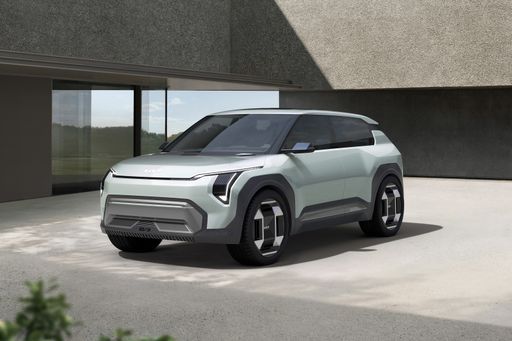 @ Kia Corporation
@ Kia Corporation
Kia EV3
Costs and Consumption
View detailed analysis
Engine and Performance
View detailed analysis
Dimensions and Body
View detailed analysis
BYD Atto 3
The BYD Atto 3 mixes quirky crossover styling with a cleverly packaged interior that feels more premium than its price suggests. Easy to drive, surprisingly practical and loaded with user-friendly tech, it's a strong choice for buyers who want an EV that's fun without being fussy.
details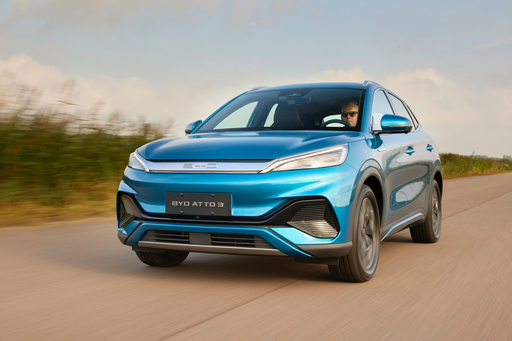 @ BYD Auto / BYD Global Media
@ BYD Auto / BYD Global Media
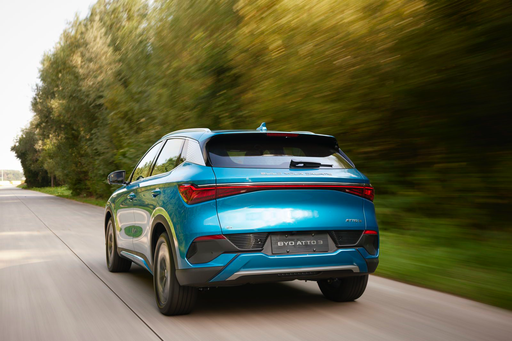 @ BYD Auto / BYD Global Media
@ BYD Auto / BYD Global Media
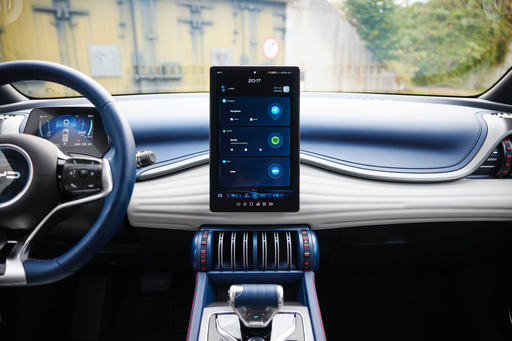 @ BYD Auto / BYD Global Media
@ BYD Auto / BYD Global Media
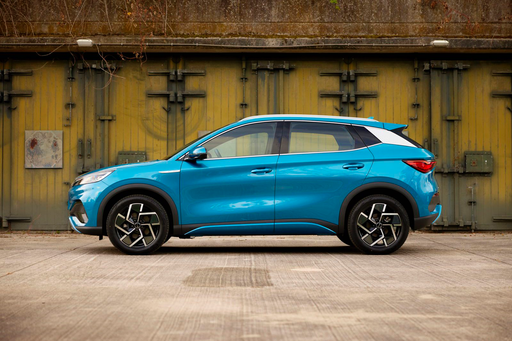 @ BYD Auto / BYD Global Media
@ BYD Auto / BYD Global Media
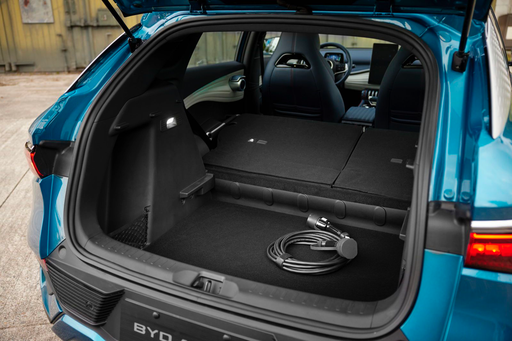 @ BYD Auto / BYD Global Media
@ BYD Auto / BYD Global Media
Kia EV3
The Kia EV3 arrives as a cheeky, practical electric compact that manages to feel both premium and playful, delivering crisp handling and a roomy cabin that's perfect for urban life. With smart tech, friendly styling and sensible pricing, the EV3 is the kind of car that makes switching to electric feel like a no-brainer without asking you to give anything important up.
details @ Kia Corporation
@ Kia Corporation
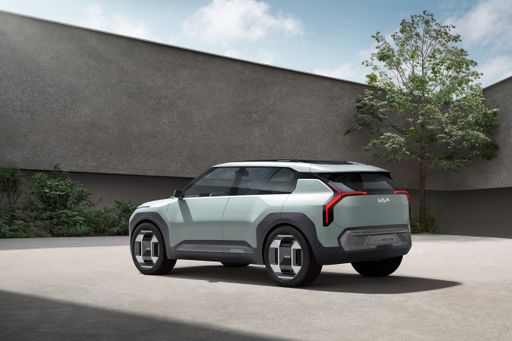 @ Kia Corporation
@ Kia Corporation
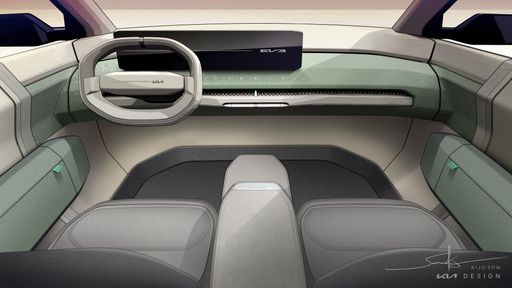 @ Kia Corporation
@ Kia Corporation
 @ BYD Auto / BYD Global Media
@ BYD Auto / BYD Global Media
|
 @ Kia Corporation
@ Kia Corporation
|
|
|
|
Costs and Consumption |
|
|---|---|
|
Price
33400 - 35100 £
|
Price
30800 - 41700 £
|
|
Consumption L/100km
-
|
Consumption L/100km
-
|
|
Consumption kWh/100km
16 kWh
|
Consumption kWh/100km
14.9 - 16.2 kWh
|
|
Electric Range
420 km
|
Electric Range
436 - 605 km
|
|
Battery Capacity
-
|
Battery Capacity
58.3 - 81.4 kWh
|
|
co2
0 g/km
|
co2
0 g/km
|
|
Fuel tank capacity
-
|
Fuel tank capacity
-
|
Dimensions and Body |
|
|---|---|
|
Body Type
SUV
|
Body Type
SUV
|
|
Seats
5
|
Seats
5
|
|
Doors
5
|
Doors
5
|
|
Curb weight
1825 kg
|
Curb weight
1800 - 1885 kg
|
|
Trunk capacity
440 L
|
Trunk capacity
460 L
|
|
Length
4455 mm
|
Length
4300 - 4310 mm
|
|
Width
1875 mm
|
Width
1850 mm
|
|
Height
1615 mm
|
Height
1560 - 1570 mm
|
|
Max trunk capacity
1338 L
|
Max trunk capacity
1251 L
|
|
Payload
335 kg
|
Payload
470 kg
|
Engine and Performance |
|
|---|---|
|
Engine Type
Electric
|
Engine Type
Electric
|
|
Transmission
Automatic
|
Transmission
Automatic
|
|
Transmission Detail
Reduction Gearbox
|
Transmission Detail
Reduction Gearbox
|
|
Drive Type
Front-Wheel Drive
|
Drive Type
Front-Wheel Drive
|
|
Power HP
204 HP
|
Power HP
204 HP
|
|
Acceleration 0-100km/h
7.30 s
|
Acceleration 0-100km/h
7.5 - 7.9 s
|
|
Max Speed
160 km/h
|
Max Speed
170 km/h
|
|
Torque
310 Nm
|
Torque
283 Nm
|
|
Number of Cylinders
-
|
Number of Cylinders
-
|
|
Power kW
150 kW
|
Power kW
150 kW
|
|
Engine capacity
-
|
Engine capacity
-
|
General |
|
|---|---|
|
Model Year
2023
|
Model Year
2024
|
|
CO2 Efficiency Class
A
|
CO2 Efficiency Class
A
|
|
Brand
BYD
|
Brand
Kia
|
What drive types are available for the BYD Atto 3?
The BYD Atto 3 is available as Front-Wheel Drive.
The prices and data displayed are estimates based on German list prices and may vary by country. This information is not legally binding.
